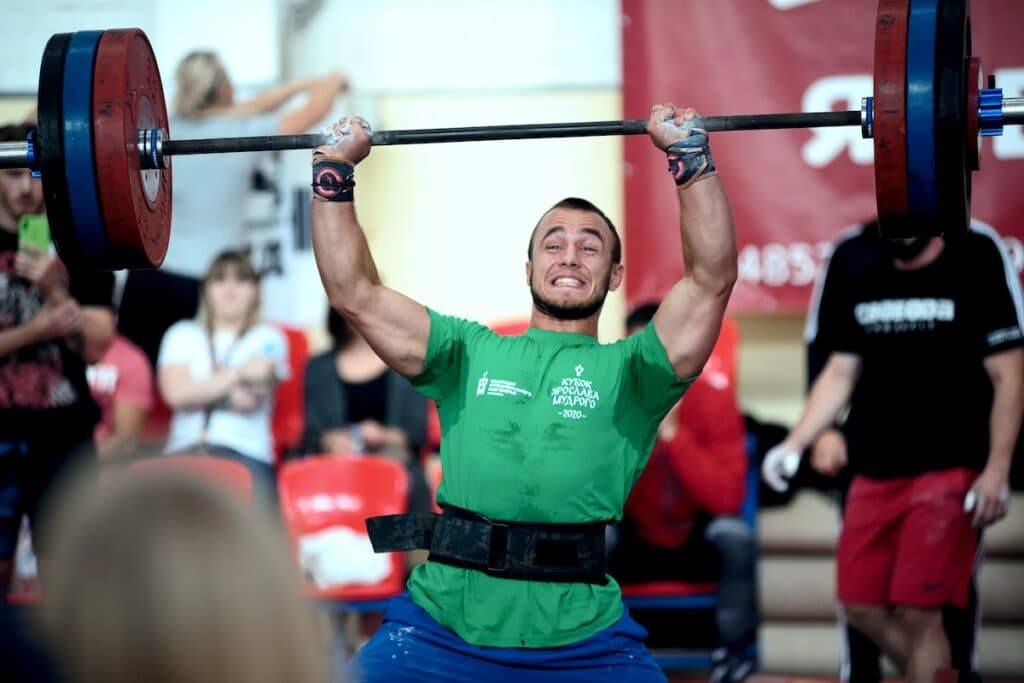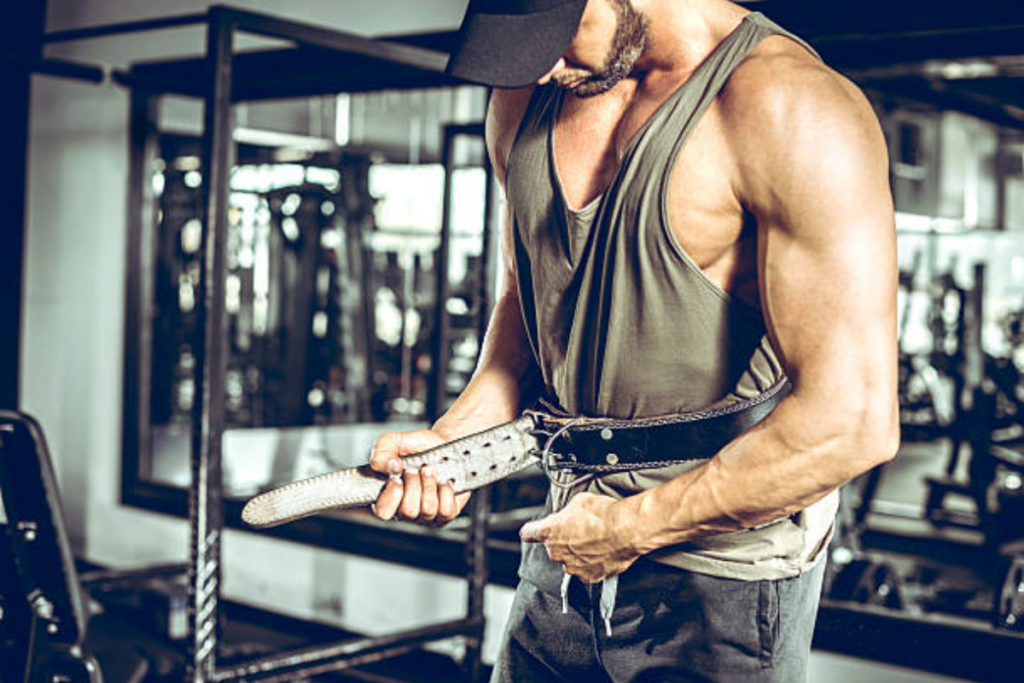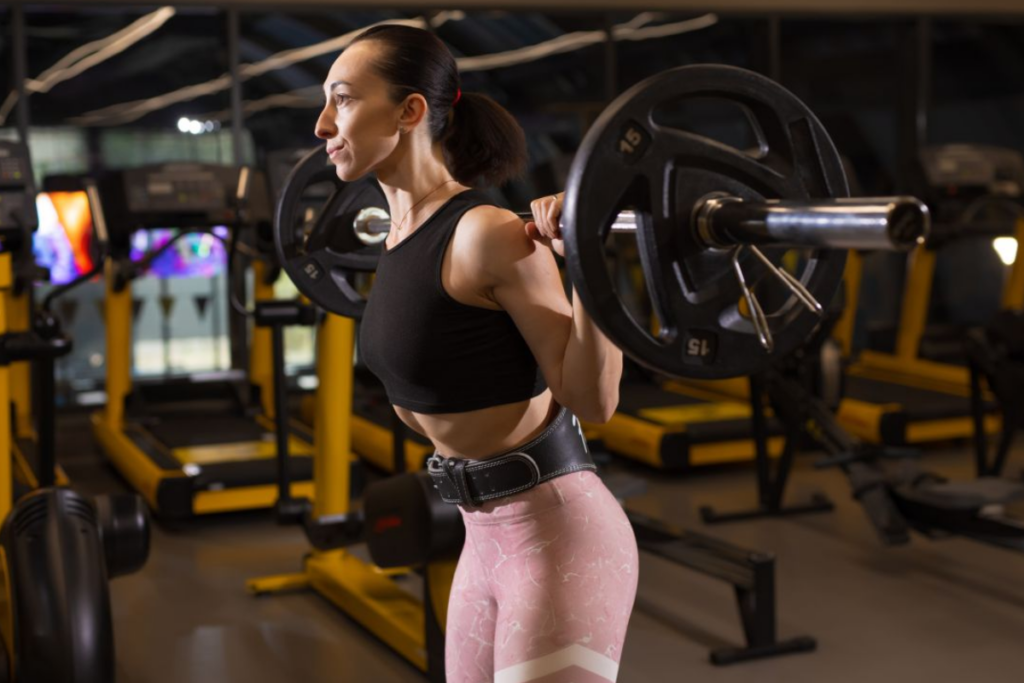In strength training, where we push the limits of the human body, there’s a little-known hero in the gym – the lifting belt. Lifting belts are essential for anyone looking to improve their strength training, including powerlifters attempting to set new personal records.
In this article

At first glance, it might seem like a basic strip of leather or synthetic material. Some consider them unnecessary, while others value their usefulness. This article discusses the true benefits of lifting belts for both novice and experienced lifters. So, let’s dive into the world of lifting belts and uncover why they’re an essential tool for any serious lifter.
What are lifting belts?
Lifting belts, also known as weightlifting belts or back support belts, are designed to provide support and stability to the lower back and core during weightlifting and strength training exercises.
What are the main uses of weightlifting belts?
Here, we break down the primary uses of lifting belts:
1. Reduce the risk of injuries
The primary function of a lifting belt is to increase intra-abdominal pressure. When lifting heavy weights, athletes will often take a deep breath in and then hold it, a maneuver known as the Valsalva maneuver, which causes the pressure in the abdominal cavity to rise. Belts reinforce this brace effect by giving these muscles something to push against. This helps to stabilize the spine and reduce the compressive forces on it, thus reducing the risk of injuries.

2. Posture support
The belt also acts as a reminder for the lifter to keep their back straight during heavy lifts. It provides feedback to the lifter, helping them maintain the correct form and posture, which is crucial in preventing injuries and maximizing the effectiveness of the lift.
3. Stability
By increasing the intra-abdominal pressure, the belt also improves stability during heavy lifts. This can improve an athlete’s performance by lifting heavier weights. A lifting belt cannot replace proper lifting technique or core strength, but it can help prevent injury and improve performance.
What are the benefits of lifting belts for novice lifters?
Weightlifting belts can be beneficial for novice lifters, but it’s important to note that they are not necessary for everyone. Novice lifters are often still learning the proper form and technique for various exercises, and a belt can sometimes act as a safety net during this process. Here are the benefits of lifting belts for novice lifters:
- Safety: When used correctly, a lifting belt can provide extra support to the lower back, helping to protect against injury as novice lifters learn the correct form.
- Technique Feedback: A belt can also serve as a tactile cue, promoting awareness of the body’s position and alignment during lifts. It can help the lifter learn to properly brace their core and maintain a neutral spine – critical elements of a safe and effective lifting technique.
- Confidence Booster: Novice lifters may try heavier weights if they know they have support. This accelerates strength gains and learning. However, novice lifters shouldn’t overuse the belt. It doesn’t replace core strength and lifting technique. Only the heaviest lifts require the belt.

[Related: Should Women Lift Heavy Weights (And Why)?]
Types of weight belts
Here are some common types of lifting belts:
- Powerlifting Belt: Powerlifting belts are typically wider and thicker than other lifting belts. They are made of stiff leather or reinforced nylon material to offer maximum support and stability during heavy lifts, such as squats, deadlifts, and bench presses.
- Olympic Weightlifting Belt: Olympic weightlifting belts are narrower and more flexible compared to powerlifting belts. They are usually made of leather or nylon with a velcro or buckle closure. These belts are specifically designed for the dynamic movements involved in Olympic weightlifting, such as the clean and jerk, and snatch.
- Velcro Belt: Velcro belts, also known as quick-release belts, are popular among fitness enthusiasts and casual lifters. These belts consist of a nylon strap with a velcro closure, allowing for easy adjustability and a snug fit. Velcro belts are less rigid compared to powerlifting or Olympic weightlifting belts and provide moderate support and stability.
- Nylon Belt: Nylon lifting belts are lightweight, flexible, and often made of reinforced nylon or neoprene material. They offer moderate support and are suitable for a wide range of weightlifting and strength training exercises.
- Lever Belt: Lever belts are primarily used in powerlifting and are known for their quick and secure tightening mechanism. These belts typically feature a lever buckle that provides a strong and consistent fit. Lever belts are made of thick leather and offer excellent stability and support during heavy lifts.
- Tapered Belt: Tapered lifting belts have a wider back section that gradually narrows toward the front. This design allows for greater freedom of movement in the abdominal area while still providing support to the lower back. Tapered belts are suitable for individuals who require a balance between support and mobility, especially during exercises that involve bending or twisting movements.
How to properly wear a weightlifting belt
Wearing a weightlifting belt properly is crucial to ensure it provides the intended support and protection during your lifts. Here’s a step-by-step guide on how to properly wear a weightlifting belt:
- Choose the right size: Measure around your waist, just above your belly button, and select a belt that matches your measurement.
- Put on the belt correctly: Hold the weightlifting belt with the inside facing you and the buckle on your right side. Position the belt around your waist with the buckle on the right and the free end on the left.
- Position the belt on your lower back: Align the back of the belt with your spine, covering the muscles on either side of your spine.
- Tighten the belt: Pull the free end of the belt through the buckle, creating a loop. Firmly tighten it until it’s snug but comfortable, avoiding over-tightening.
- Secure the belt: Fasten the buckle by inserting the free end into the appropriate hole, ensuring it’s securely fastened.
- Check the fit: Stand up straight and take a deep breath. The belt should feel snug and supportive without being too restrictive, allowing you to breathe comfortably and maintain proper form.
- Adjust as needed: Make slight adjustments throughout your workout if the belt feels too tight or loose. Listen to your body and make necessary adjustments.
Check out this video called “How to Properly Wear a Weightlifting Belt” from the 2POOD Youtube Channel:
Remember, wearing a weightlifting belt is not a substitute for proper lifting technique and form. It’s essential to learn and master correct lifting mechanics, engage your core muscles, and use the belt as an aid rather than a crutch.
When are weight belts not necessary to use?
Weightlifting belts are not necessary for exercises in which the spinal erectors (muscles along the spine) are not working against heavy resistance. For example, exercises like lateral pull-downs and leg extensions do not typically require the use of a weight belt.
Weight belts are also not needed for exercises that have you sitting or lying down. These exercises typically do not place significant stress on the lower back and, therefore, do not require the use of a weight belt.
Frequently asked questions (FAQ)
Got more questions about weight belts? Check out some commonly asked questions about this topic below.
Are lifting belts only for professional or advanced weightlifters?
No, lifting belts can be used by lifters of all levels, including beginners. They can provide support and stability during heavy lifts and help with learning proper form.
Do lifting belts hinder core muscle development?
When used appropriately, lifting belts do not hinder core muscle development. In fact, they can be used to enhance core engagement during heavy lifts. However, it’s important to balance belt use with exercises that specifically target core strength to ensure overall development.
Can lifting belts be used for exercises other than weightlifting?
Yes, lifting belts can be used for exercises beyond weightlifting. They can provide support and stability during exercises that stress the lower back or require core engagement, such as bent-over rows, weighted lunges, or other activities where maintaining proper form is crucial. However, they are not necessary for all exercises or fitness activities.
Final Word
Lifting belts are useful for all lifters, providing support, stability, and injury prevention during heavy lifts. They enhance performance, reduce lower back injury risk, and promote proper form. However, remember to prioritize core strength development and complement belt usage with core-targeting exercises.
So, have you considered incorporating a lifting belt into your training routine? Are you excited to experience the benefits they offer in your weightlifting journey? If so, don’t keep it to yourself! Share this article with a friend who might find it helpful.
